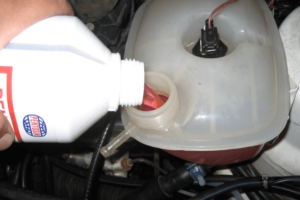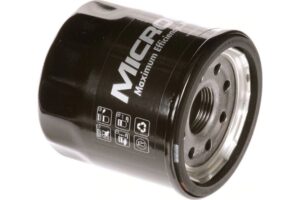Most cars produced since the early 2000s have a convenient DTE feature. While this is true, many people are still unaware of ‘DTE.’ So, what does DTE mean in a car?
A Distance To Empty (DTE) function on the dashboard of the automatic and electrical car tells the driver how many miles they have left until empty. This feature’s placement varies depending on the vehicle type.
It is an excellent feature used for preventative maintenance and safety measures. Despite this, it is not entirely accurate and should be taken with a grain of salt. I do not recommend driving a nearly gas-empty car, though.
Read on to learn more about the meaning of DTE in a car, how to use this feature, and how to care for your car.
What Does DTE Mean in a Car?
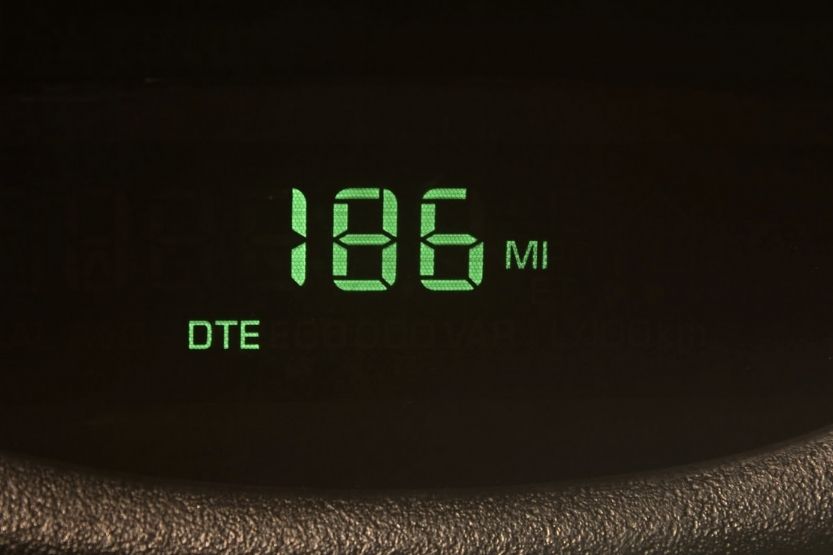
Distance to Empty
You might have recently noticed an interesting feature in your car; a small button, label, or digital marker that shows a ‘DTE,’ but what exactly is this? DTE stands for distance to empty. Usually, a small number or image in your car states how many miles are left until empty.
Common Built-in Feature
This common built-in feature is usually used to predict how many miles a person may have until they are empty. However, something interesting to consider is that it is an estimate, and you might have room for more miles or hit empty before the DTE states’ 0′.
Connected with Gaslight
Typically, the DTE system and feature are also connected with the gaslight. My heart almost always stops when that light turns on.
Usually, on the left side of the dashboard, a red, orange, or green gas light turns on when you are low. In most cars, this light turns on when there are about 5-10 miles left before empty.
LE vs. XLE: Which One Is Better?
The History of DTE
How Long Has DTE Been Installed in Cars?
Before diving into the many tips and tricks on using the DTE feature in your car, we should briefly review the history. First, this feature has not always existed. Instead, car manufacturers only recently installed it within the last three decades.
Fuel Gauge Is Not Always Accurate
Before this, it was simply the fuel gauge. There is nothing inherently wrong with relying on the fuel gauge. However, it is not always accurate.
Over time, this piece starts to wear down and can point higher than the actual. This is typically located on the right side of the dashboard, but it varies by manufacturer.
During the 1970s and 1980s, drivers started noticing many issues with their cars. They were often left stranded without gas, although their fuel gauge did not point at empty.
DTE Function on Cars
This, along with the leaking of fuel, prompted car companies to take action and create the DTE function on cars. Now, all new cars have a digital DTE that is accurate and easy to read.
How to Find a Car with a DTE Feature
Thankfully, you won’t have a hard time finding a car with built-in DTE features. You should first consider looking for a car in a dealership. Although they can be more expensive, the dealers must be transparent about all accidents and repairs, which is not the case for third parties and personal sellers.
All modern cars have DTE. Look for a car made after 1985 for the best chance of finding a car with this feature.
If you look for antique cars, you won’t find a DTE system, just an outdated fuel gauge. All-new Ford cars have a digital and upgraded DTE feature that warns a user as early as 80 miles before emptying.
When Is a Car ‘Empty’?
Possibly the most confusing thing about cars is the gas and mileage. For example, how do you find out when a car is considered empty?
Factors to Consider
It is not easy to make this assumption; there are many factors you need to consider, including the following:
- DTE,
- Fuel gauge, and
- The car’s overall health.
For example, older cars tend to wear down over time. When this occurs, the fuel gauge and DTE features may not function as they should.
Sometimes, even when the fuel gauge points to empty, this does not mean your car is completely out of gas. However, you should immediately drive to a gas station as soon as possible.
Dust and Dirt Particles in Gas Pumps and Containers
Most of the time, there are dust and dirt particles in gas pumps and containers, which can ruin a car. Burning this dirt instead of fuel can increase the speed of wear and tear.
Signs of an Almost Empty Fuel Tank
Your engine will shut off as soon as there is no gas. The general idea is that when the gas light turns on and the fuel gauge hits zero, about 30-50 miles are left. Although this is the case, you can feel it when your car starts to slow down due to a lack of gas.
Have you ever slammed your foot on the gas, only to hear rumbling or screeching sounds? This is typical because you are burning the last bit of fuel, mixed with debris, to move. Trust me, when you are out of gas, you will know. The car won’t turn back on.
How Much Time Is Really Left Until Empty?
The answer to this question is not easy. Every car company has created its designs and engines. The more recent engines can still function for another 50-70 miles until it shuts down from the lack of fuel.
Older engines, especially those with leaks, often only last between 5-and 20 miles before shutting down. It is important to fill up as soon as possible.
5 Tips and Tricks To Make Car Fuel Last Longer
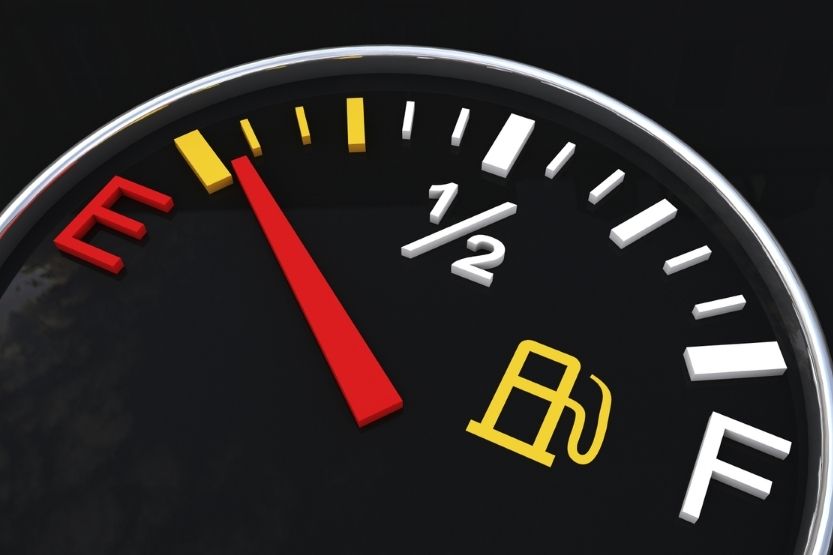
As fuel prices increase and cars age, it is important to be prepared for anything! Not only should you prepare for low and empty gas, but you should prevent it by any means necessary.
Five tips and tricks below can help you make your car’s fuel last longer:
1. Check the Fuel Gauge Before Driving
This tip might sound like common sense, but you would be surprised to find that many people often drive without glancing at their fuel gauge. Although the DTE is a brilliant feature, it is not always accurate.
However, if your fuel gauge is close to empty, trust this feature and fill it up! I recommend filling your tank the night or day before a long drive. Anything can happen in the morning to stall your day. What if you are running late? Running late or not, you still need to load up on fuel.
2. Refill Gas When Halfway
Instead of waiting for your gas gauge and DTE to run low, I recommend refilling as soon as the fuel gauge points to the halfway mark.
While it is true that you can continue to drive on a low fuel tank, this does not mean you should. Unexpected traffic can have you sitting for hours instead of zooming home or to the next gas station.
3. Use the Right Fuel
Did you know that all cars need to use a specific fuel? There are about three to four main fuel types sold in gas stations. The standard fuel is what most every car manufacturer recommends. It is made with 85 to 88 octane.
However, the higher the octane, the higher the quality! If you do not use the right fuel for your car, it can cause serious damage over time. It is also not recommended to use a different fuel type than what your car is used to.
4. Regular Car Maintenance
The best tip I have for you is to maintain your car properly. When there are no leaks, cracks, or dents, this increases the car’s quality and overall health. However, not getting frequent oil changes can lead to issues with the fuel tank, including overheating.
Regular car maintenance also includes filling your tires with the right amount of air. When there is not enough air in your ties, this can cause your engine to use more fuel to get the car moving! Check the tire in your airs at least once a month, mainly if you regularly use the car.
5. Keep a Slow and Steady Speed
Speeding is dangerous and not recommended generally, especially if you want to make your fuel last longer. Keeping a slow and steady pace will lightly use the fuel.
However, if you frequently accelerate quickly, this causes the engine to use more fuel. It also stresses the car out and can lead to damage over time.
Again, what is Distance to Empty (DTE)? DTE is a common trip computer function found in most cars, showing the remaining range with the present fuel economy as the basis. It is also present in electric cars.
What Are the Dangers of Driving on Low Gas
Truthfully, things happen. I understand that sometimes driving on low to no gas is the only possibility. However, you must know that this is dangerous. When you drive on ’empty’ or a low number listed on your DTE feature, more harm is done to your car.
What happens when you continue to drive on an empty tank? While eventually, the car will stop driving and functioning, before this, it does damage to the car.
Don’t worry; driving empty once won’t mess up your car for life. However, if you do this consistently, it will wear down expensive and important car parts.
Possible Damage to the Car’s Catalytic Converter
For example, driving on low or empty forces the car to use every last drop of fuel, leading to a damaged catalytic converter, an important part of the exhaust system. Small dust and dirt particles make their way inside the fuel tank when you burn fuel.
Debris in the fuel tank clogs the fuel tank’s filter, leading to worsening problems later on. Usually, you can smell a burning scent coming from the car if the filter is not working.
Overheating
Did you know that driving empty can also lead to significant overheating? As the last fuel is burnt and used, the gas tank overheats, causing leaks and cracks over time. You might not notice this right away, and it could leave you stranded!
Signs that Your DTE Is Not Working
Sadly, with time, certain features begin to stop working. Thankfully, there are many solutions to DTE problems in cars. First, though, it is important to establish that there is an issue with this software. Listed below are a few signs that your DTE is not working properly:
1. Overpaying for Gas
Have you suddenly realized an increase in your monthly gas bill? This can be a sign that your DTE feature is not working appropriately. It would let you know when your gas is getting low enough to burn and work hard if it worked.
2. Smell of Smoke
It is always concerning when there is a distinct and strange smell or sight in a car, including smoke. Since a lack of fuel causes the dirt and debris to burn, it is possible to smell and see smoke from your car. Turn your car off, and move away as soon as you can.
3. Numbers Not Moving
The number one sign that the DTE feature is not working is noting that the numbers are not moving on the display. Have you been driving for hours, yet your DTE states you have hundreds of miles left? This is something that needs to be looked into.
How to Take Care of the DTE Feature in Your Car
Excellent Feature
This common computer feature, the DTE, is an excellent feature often used in modern cars. It is a great feature that can offer safety, time for planning, and more.
Can Wear Down Over Time
Although it is an excellent computer feature, this does not mean it can’t wear down over time. This is why it is important to maintain the DTE feature in your car.
Professional Maintenance at Least Twice a Year
Since it is a computer feature, there needs to be professional maintenance at least twice a year. A mechanic can happily look at your system to ensure its condition. One common problem the DTE feature faces is when it stops loading.
Computers require maintenance and updates. However, updates do not happen consistently. If you notice that your DTE is not showing accurate numbers, it may be time to take your car to the dealership.
The employees have computers and the technology to properly update your car’s computer system in dealerships, leading to a smooth DTE feature.
DTE Frequently Asked Questions
What Does DTE Stand For?
DTE stands for distance till empty. A computer feature installed in various cars tells the driver the approximate miles left until the fuel tank is empty.
What Is the Purpose of a DTE Feature in a Car?
The overall purpose of a DTE feature in a car is to warn the driver that their car’s fuel tank is getting close to empty. This digital feature is easy to read and usually installed in the dashboard. However, the placement varies depending on the make and year of your car.
How Long Have Cars Used DTE Features?
DTE features are modern. They have only been in use since the 1980s, when manufacturers noticed many complaints from drivers left stranded without fuel in their tanks and with no warning.
Do All Cars Have a DTE Feature?
No! Although not all cars have some DTE feature, the more modern ones do. Cars made after the mid-1980s have a digital DTE installed in the dashboard. Newer models with DTE features use updated SMART technology and touch screens to display the DTE.
When Is the Right Time to Fill Up on Fuel?
As long as you don’t let your fuel tank ride on empty, anytime is the right time to fill up on gas or fuel!
If you want to preserve your car’s overall health, I recommend filling up on fuel at least halfway. This way, you are safe, and the chances of a loss of gas are reduced. It’s best not to find yourself stranded without gas!
How Long Can You Drive On Empty?
Although it is recommended not to drive empty, sometimes things happen! Are you suddenly driving on empty, looking desperately for a gas station? First, take a deep breath.
Although the DTE may state that there are ‘0’ miles left or the gas light is on, this does not indicate you are completely out of gas. Newer cars have about 30-50 miles of gas left until it runs out and the engine shuts down.
The amount of time, though, completely depends on many features. For example, the temperature outside, the health of your car’s parts, and how fast you are driving all interfere with how long you can drive on an empty fuel tank.
Conclusion – The Meaning of DTE in a Car
It is important to know all of the features installed in your car. This is why we have given you basic information about the DTE feature in cars, how to read it, and how to use it.
When looking at the Distance Till Empty (DTE), it is crucial to understand that the numbers are not exact. Consider other things like the speed you drive, outside temperature, and overall car maintenance.
This brilliant feature is one of a kind and only continues to develop and increase functionality. If you are in the market for an energy-efficient car that uses low amounts of gas, consider reviewing the DTE features carefully.
Read next:


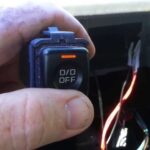
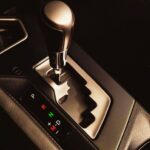


![DRL Warning Light [What Does It Mean, Causes, and How to Fix] what does the drl warning light mean](https://roadsumo.com/wp-content/uploads/2022/04/what-does-the-drl-warning-light-mean-150x150.jpg)
